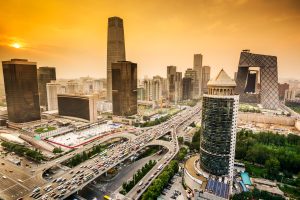Kung Chan and He Jun

In the aftermath of the profound impact of the COVID-19 pandemic, the surge in anti-globalization sentiments, and escalating geopolitical competition, the landscape of the global economy has undergone substantial transformations.
China, too, felt these shifts, distinct from the era of globalization. China’s private enterprises are grappling with escalating challenges in their operations. The business milieu is witnessing a persistent deterioration, prompting a discernible erosion of confidence in the future market.
Geopolitical factors have now instilled apprehensions among foreign enterprises contemplating investments in China. On one hand, concerns loom regarding potential sanctions and constraints from the Western world, while on the other, there is a palpable unease that China may respond disproportionately to Western actions, thereby exerting pressure on foreign investments.
Concurrently, ordinary consumers, influenced by unfavorable expectations concerning economic prospects, employment, income growth, and capital markets, find their confidence notably subdued, a trend reflected in China’s consumption and investment figures.
With all these factors in mind, the future trajectory of the Chinese economy has sparked diverse perspectives. Within the country itself, some have proposed that China is shifting toward a “war-driven economy.” According to such a view, Chinese investment strategies ought to align with this premise, with emphasis placed on the military industry, cutting-edge technologies, food security, supply and marketing cooperatives, large-scale community canteens, and low-end consumption. Conversely, promoting high-end consumption, large-city strategies, and individual wealth creation should be discouraged.
However, the reality is that it is highly improbable for China to engage in actual warfare. Historically, a “war-driven” economy has proven incompatible with a thriving economy. If the focus is on war, the economy suffers, and vice versa. It should be kept in mind that a sustained state of preparedness for war, subordinating the economy to this objective, is not synonymous with normal defense investments.
The logic of the war-driven economy has a major flaw. Under such circumstances, the economy becomes a long-term liability, either sacrificed for war or weighed down by the colossal military apparatus and its need for substantial economic support. Infrastructure is in fact materialized debt, which requires upfront investments and incurs ongoing maintenance costs. Regardless of infrastructure type, excessive quantity inevitably leads to repayment obligations, and this means there is an inherent incompatibility between a “war-driven” and a sustainable economy.
If a war-driven economy is not China’s chosen path, the future Chinese economy is more likely to gravitate toward centralization. This economic model, characterized by dominance from state power, achieves control over resources. The centralized economy is distinguished by two features.
The first is the effective coverage and control in strategic fields, implying that the Communist Party or giant state-owned enterprises will exert control over nearly all industries with significant value. This includes traditional sectors like commercial banking, insurance, securities, telecommunications, oil, coal, grain, electricity, infrastructure, automotive manufacturing, and critical mining, where central or state-owned enterprises already wield dominance. However, even sectors like real estate, semiconductors, venture capital, bank card clearing, digital technology, and asset management – all areas traditionally dominated by private enterprises – are gradually leaning toward this centralized economy model.
Second, there will be a dominant concentration in competitive fields. While private enterprises have historically been the primary players in areas characterized by market competition, such as the internet, retail, textiles and apparel, internet finance, photovoltaics, electric vehicles, and batteries, under the centralized economy model the central government will systematically control almost all private enterprises through policy frameworks.
That being said, a centralized economy does not equate to a planned economy, and this is primarily due to the infusion of a market element. Unlike the planned economy era, when there was no market in China, the centralized economy model acknowledges the existence of a market that will continue to expand with economic growth, albeit subject to a certain degree of central control. Significant projects, along with fiscal and financial resources, can be leveraged for indirect control over the market within this framework.
As it stands, the Chinese central government is likely to exert more control in key strategic sectors via central enterprises in the future, and concurrently policy systems and resource allocation of the country may enable a degree of control over competitive sectors occupied by private enterprises. Therefore, market entities and government institutions, not just in China but in other countries, should prepare to adapt to these impending changes.
No comments:
Post a Comment